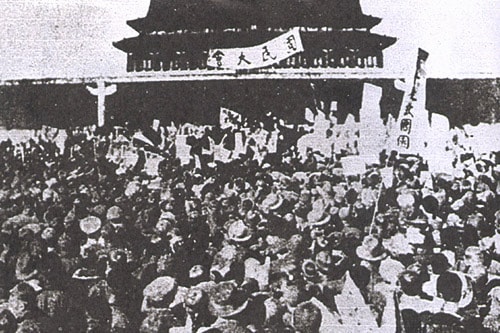AllAsia and OceaniaResolved
The May Fourth Movement and the Rise of Communism in China
An anti-imperialist, cultural and political movement in Beijing was formed in response to the Chinese government’s subpar response to the Treaty of Versailles. Strikes and national protests taking place in 1919 began a marked upsurge of Chinese nationalism, which eventually transformed into today’s communist regime in China.

China undoubtedly experienced an almost miraculous transformation from a poor and colonized agrarian nation to a full-blown world economic power in the short span of 100 years. Following the disintegration of the Qing dynasty in 1911, the end of China’s Imperial Rule beckoned a new era where political power rested in the hands of the people.
Dissatisfied with their government’s weak response to the Treaty of Versailles in which territories in Shandong were surrendered by Germany after the siege of Tsingtao, protests and uprisings amongst the Chinese public began a political movement and sense of nationalism, leading up to what is today known as the Chinese communist revolution.
The intellectual and reformist movement reached a peak in 1919. The movement was primarily led by University students who were upset with China’s relations with Western powers post-WWI. Most upsetting to the group was the shifts of German interests over to Imperial Japan in the Shandong province.
Along with the restoration of Chinese independence, the movement sought socio-political reform which included eradication of Confucian values, moving in to a society which valued liberal individualism, industry and science.
The New Culture Movement specifically targeted Confucianism, which was the ideology that sustained the Qing dynasty. Participants found the ideas of Confucianism to be outdated; societal values such as strict hierarchies and patriarchy were not serving the changing needs of a more globalized world.
Western values such as individual liberties, democracy and equality quickly gained foothold throughout the whole country. By 1919, the country had no effective governing body and interests pertaining to China were almost completely overlooked by the Treaty of Versailles.
The Peak of the May Fourth movement landed on May fourth, 1919 when thousands rallied in the streets of Beijing to protect Chinese treatment in the framework of the Treaty of Versailles. The physical protest was supported all around the country with an organized labor strike. The CCP was formed off this movement officially two years later.




